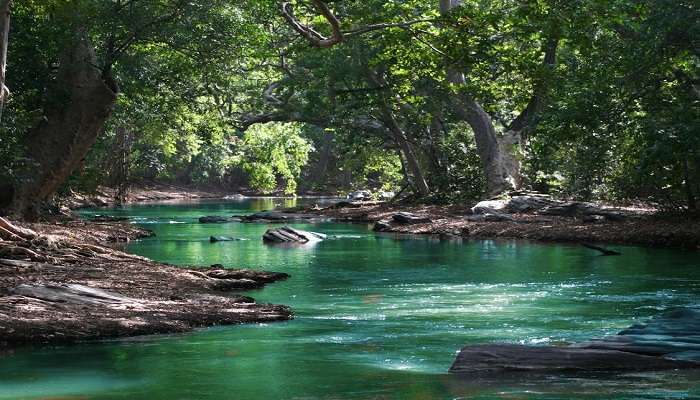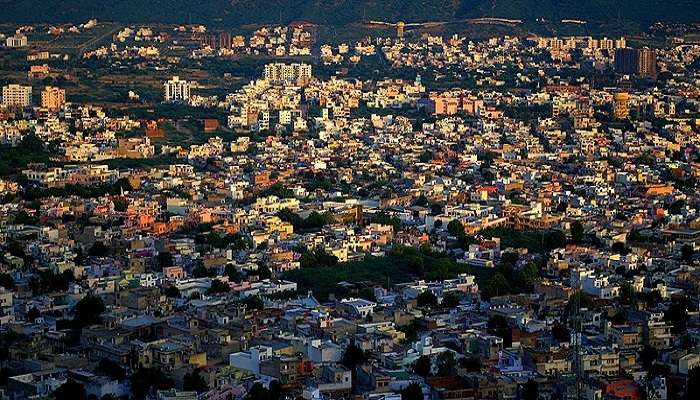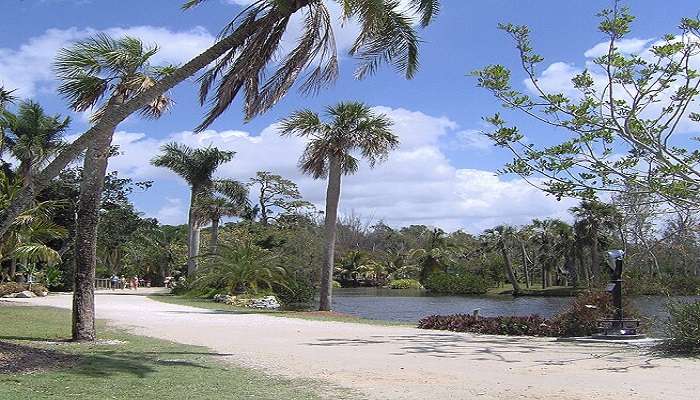Suppose you are curious to witness the beautiful treasures of Indian royalty. In that case, you should visit one of the most renowned sites of Gwalior, the HH Maharaja Sir JiwajiRao Scindia Museum, also known as Jai Vilas Palace. The Museum is a perfect blend of Indian and European architecture that represents the royalty and richness of the Scindia dynasty, one of India’s most powerful and influential dynasties. Now, it has become a famous museum that exhibits its marvellous collection of artefacts, weapons, paintings, jewellery, and more. In this article, we will embark on a journey and learn about its history, antique collection of artefacts, nearby tourist attractions, and basic information for witnessing and exploring this magnificent palace and its surroundings.
About HH Maharaja Sir Jiwajirao Scindia Museum
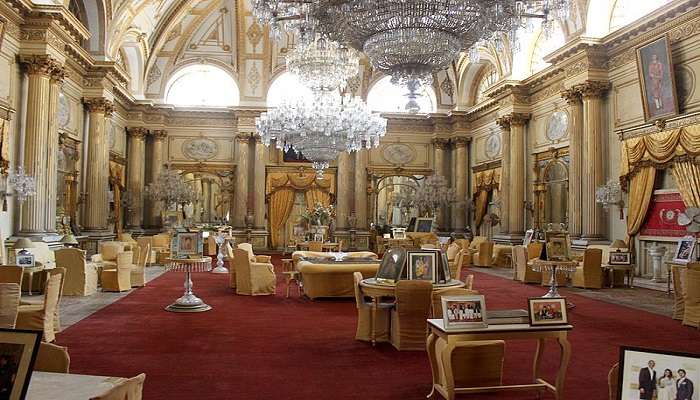
Image Credit: Suyash Dwivedi for Wikimedia Commons
HH Maharaja Sir Jiwajirao Scindia Museum is also a part of the Scindia Museum in Gwalior City, Madhya Pradesh. It was built by Maharaja Jayajirao Scindia in 1874. At that time, Gwalior was considered a princely state of British India. The palace is a triple-storeyed building designed by Lieutenant Colonel Michael Filose, also known as Mukhel Sahib, who was the director and chief secretary of public instruction at Gwalior in 1863.
The palace was designed and developed in the Western style so that Maharaja would have a Western-style residence and also to impress the top British Indian officers. On that day, Queen Mary and King Edward VII were about to come to India in 1905; thus, the palace was made to offer them a lavish welcome to this newly constructed royal palace, which is now recognised as the HH Maharaja Sir Jiwajirao Scindia Museum.
Also Read: Places To Visit In Gwalior
History Of HH Maharaja Sir Jiwajirao Scindia Museum
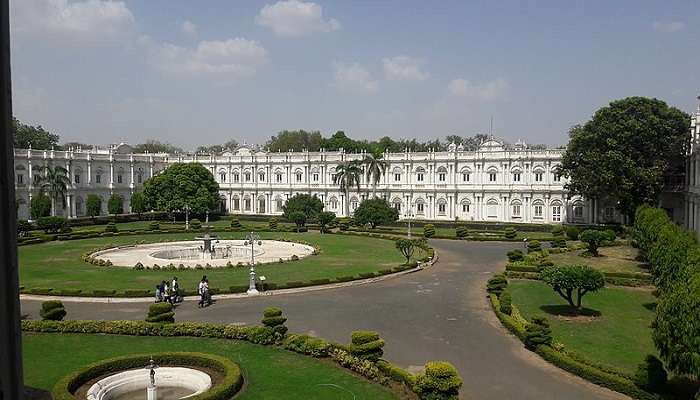
Image Credit: PrasIITR for Wikimedia Commons
The HH Maharaja Sir Jiwajirao Scindia Museum was built by Maharaja Jayajirao Scindia, the monarch of Gwalior, in 1874. It was designed by one of the famous architects of that time, “Michael Filose” who incorporated Corinthian, Tuscan, and Italian styles into this palace.
The cost of construction of the whole palace was about one crore Indian rupees, which was an extremely high amount at that time. HH Maharaja Sir Jiwajirao Scindia Museum was inaugurated by the Governor of Madras and Lord Napier in the presence of King Edward VII, the Prince of Wales. During the construction phase, the museum was not planned. On December 12, 1964, Rajamata Vijaya Raje Scindia took the initiative and decided to convert the west and south wings of the palace into a museum. Since then, the Museum has been transformed into the Jai Vilas Museum.
Antique Collections Of Artefacts
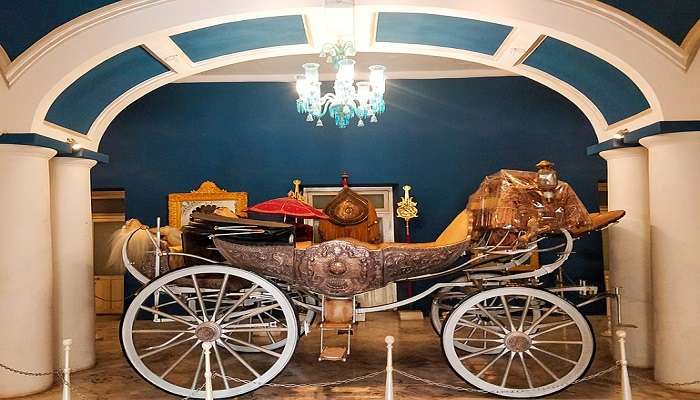
Image Credit: AnkyINDIA for Wikimedia Commons
The Jai Vilas Museum is a paradise for arts and history lovers. This enchanting museum in the country is only one of a kind, with beautiful architecture, rare and unique artefacts, and stunning interiors. Tourists can witness the finest decorated staterooms and the royal kitchens, which blend three cultures- Indian, English, and French. The other galleries and halls are curated with different exhibits for tourists to see. Some of the permanent collections housed in the museum are:
Vintage Paintings: The museum’s walls are adorned with ancient artefacts and classical paintings in the Maratha style. In the Western Art section, tourists can witness several oil paintings, tondos, and 3-D paintings assembled by the generation from time to time.
Exquisite Sculptures: Tourists can witness ancient sculptures dating from the 2nd century BCE to the 22nd century CE. Some of the antique marble sculptures, sandstone sculptures, patent replicas of the masterpieces, etc., are also exhibited in the museum.
Opulent Furniture: The Jai Vilas Museum has a magnificent collection of furniture, including English, Malabar, Crystal, French, and Oriental, which the Scindias collected from other regions of the world while on their tours. Some furniture is used for personal use, and the rest is showcased in the museum.
Artistic Print: The museum also exhibits some of the articles that make the artefact collection rich, such as lithographs of Tipu Sultan and Napoleon and valuable patent-coloured prints of Western artwork.
Durable Arms and Armour: The museum has a vast collection of arms and armour used by the Scindia dynasty in the past or during World War I or II. It includes pistols, guns, swords, daggers, and spears.
Decorative Art: The museum has vibrant decorative items such as ivory, glass, stone, silver crockery, ceramic utensils, wood, metal, and crystal to enrich its collection of artefacts.
Luxurious Carriage: Carriages of different designs, materials, and sizes enrich the museum’s space. Silver chariots, open palanquins, hunting Judah, gifted chariots, royal palanquins, silver buggies, and contemporary vehicles are some of the prominent oddities exhibited in the museum.
Related Post: Street Food In Gwalior
Timings And Entry Fee

Image Credit: Shagil Kannur for Wikimedia Commons
The Scindia Museum is open from 10 AM until 5 PM on all days of the week except Mondays and public holidays. Tourists can visit during these hours to witness the rich history and cultural significance of one of the renowned destinations in Gwalior. The best time to visit is between October and March. The entry fee for this enchanting mahal is Rs 100 for Indians and Rs 600 for foreigners. Photography or videography is also allowed in the museum, costing Rs 150 for the still camera and Rs 300 for video cameras.
Tourists can explore the museum in two to three hours, depending on their pace and interest. The Palace has all the facilities for tourists, like washrooms, parking, drinking water, etc. It also has a comfortable cafeteria where you can enjoy snacks and beverages. Tourists can purchase tickets at the museum’s entrance. Privileges may be available for senior citizens and students.
You May Also Like To Read: Places To Visit Near Gwalior
HH Maharaja Sir Jiwajirao Scindia Museum is one of the top tourist destinations for exploring the royal and cultural heritage of Gwalior and India. The palace is an exquisite example of Western and Indian architecture or art. It is also a museum of ancient history and royal culture. The palace is still a testimony of the Scindia family, who played an essential role in shaping India’s destiny. Tourists can experience the majesty and glory of Indian royalty and also learn about their exciting stories and legends. So plan your trip to Madhya Pradesh with our guiding tour packages to explore the breathtaking architecture and artefacts.
For our editorial codes of conduct and copyright disclaimer, please click here.
Cover Image Credit : Mohitkjain123 for Wikimedia Commons
Frequently Asked Questions About HH Maharaja Sir Jiwajirao Scindia Museum
Who is the owner of HH Maharaja Sir Jiwajirao Scindia Museum?
HH Maharaja Sir Jiwajirao Scindia Museum is currently the residence of the Scindia family, but approximately 40 rooms have been turned into the Jivaji Rao Scindia Museum, and in these rooms, tourists can witness antique collections of artefacts.
How many rooms are there in HH Maharaja Sir Jiwajirao Scindia Museum?
There are 400 rooms in the HH Maharaja Sir Jiwajirao Scindia Museum, but 40 of them have been transformed into museum sections.
What is the entry fee for HH Maharaja Sir Jiwajirao Scindia Museum?
The entry fee for Jai Vilas Museum is Rs 100 for Indians and Rs 600 for foreigners, and photography or videography is also allowed in the museum with a charge of Rs. 150 for the still camera and Rs 300 for video cameras.
Who built the HH Maharaja Sir Jiwajirao Scindia Museum?
The Museum was built in 1874 by the Maharaja Jayajirao Scindia of the Maratha Scindia Dynasty, the then Maharaja of Princely State of Gwalior. At that time, Gwalior was considered a princely state of British India.
What artefacts can we see in the Scindia Museum?
The Jai Vilas Museum has a wide collection of antique artefacts, including paintings, sculptures, prints, carriages, furniture, art, arms, and armour.
People Also Read:
Russians Museums Archaeological Museum Anuradhapura Spiritual Museum

Unveil the hidden treasures of the globe and turn every travel dream into reality. As a Content Writer, I am passionate enough to craft stories from ancient wonders to modern marvels. My words paint the picture-perfect itinerary for unforgettable experiences. Let my words be your trusted guide to immerse in the diverse culture and discover the beauty of the unknown.



